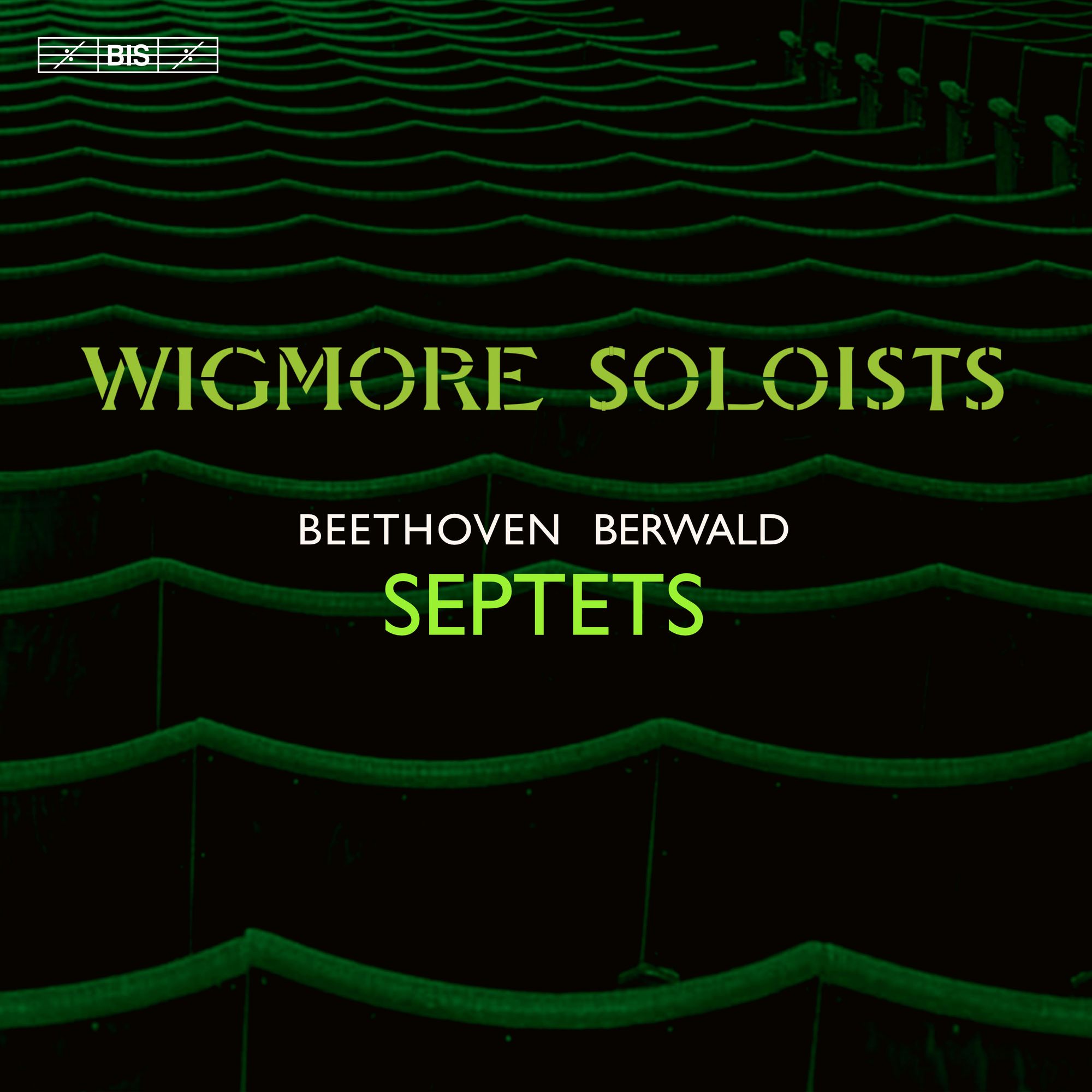Beethoven and Berwald Septets from the Wigmore

It was the young Soloists of the Berlin Karajan-Akademie at a concert in Aix-en-Provence that re-introduced me recently to the ddelights of Beethoven’s Septet for violin, viola, cello, double bass, clarinet, bassoon and horn (see review). Interestingly, the Wigmore Soloists in this brilliant and neautiful new disc couple it with a work of equivalent instrumentation, the Septet by Franz Berwald (1796-1868).
The Wigmore Soloists is a group of some of the finest instrumentalists around today: Isabelle van Keulen, violin; Rachel Roberts, viola; Adrian Brendel, cello; Tim Gibbs, double bass; Michael Collins, clarinet; Robin O’Neill, bassoon; Alberto Menéndez Escribano, horn. Here is a link to their discography on BIS.
Beethoven's Septet, Op. 20 (1799-1800, which puts it about the time of the First Symphony) is often thought of as one of his lighter works: it is effectively a serenade in six movements. Double-bass replaces second violin in the traditional Septet line-up, grounding the sound beautifully. Listen to the sound in the Adagio opening of the first movement:
Cast in traditional sonata form, the first movement bubbles over with its own invention. The expansiveness of the slow movement complements this perfectly, and taken on its own terms is eight minutes of purest Beethovenian beauty:
You might well recognise the theme os thf Tempo di menuetto: it is taken from the Piano Sonata, Op. 49/2, handled charmingly here. But for me the most fascinating movement is the Tema con variazioni. Beethoven was an absolute master of variation form, from the many lighter sets to the later piano sonatas, and ere we hear his invention bubbling over, both in terns of the “diminutions” but also in terms of how he varies the scoring. This is the perfect performance, Michael Collins’ clarinet liquid of tone, Isabelle van Keulen, who has a lot to do, giving the finest account of the violin part I have heard; Robin O'Neill's bassoon is brilliantly characterful, and so the list goes on:
A blink-and-you-miss-it Scherzo precedes the finale - Alberto Menéndez Escribano's horn defining the Scherzo itself, Adrian Brendel's cello shining in the Trio:
The seven-minute finale nicely balances the opening nin-minute movement. The Andante con moto alla marcia opening to the last movement verges on a funeral march before a vivacious Presto. This is a proper Presto here, with its violin scamperings (not to mention a written-out violin cadenza!) and overall joie de vivre. There are moments of calm beauty, too, when the wind group in this performance blends into themost marvellous sound (listen to the passage immediately prior to that cadenza, itself delivered compellingly by van Keulen):
Perhaps Franz Berwald (1796-1868) is best known for his symphonies. And yet his Grand Septet in B flat (1828) is a work of fresh humour and chamber transparency. Although entitled “Grand” Septet, it is just over half the length of teh Beethoven.
Beethoven’s Septet was regularly performed in Stockholm at the time of berwald’s composition, so the two works really are linked in time. But apart from that, and a sonata form first movement and the instrumentation, Bewwald is his own man. Only three movemens here. The first is an “Introduzione” followed by an Allegro molto.Note the pizzicato of the Introdution - it is to return later in the movement. To my ear, Berwald’s harmonic territory is what marks this movement, brilliantly idividual and somewhat sophisticated. That same sense of perfection in chamber music performance that exuded from teh Wigmore Soloists’ Beethoven pervades their Berwald, too:
How beautiful the opening of the central Poco Adagio, with Michael Collins’ clarinet in particular luminous There is a central Prestissimo scherzo, including what the booklet notes rightly call “a winner of a tune”:
Teh finale is quite the ride, bristling with energy, and this performanec is absolutely at one with the “con spirito” of Berwalds prescribed Allegro con spirito. There is much bonhomie here. Colllin’s clarinet chirping merrily, factions of the septet group merrily exhanging down- and off-beats:
A simply glowing recommendation for this little bundle of joy. The recording is everything one might expect from BIS and more. Although called the Wigmore Soloists and featuring an altered image of their seating on the front, the disc was actually recorded in Upper Norwood (London: St John's): step forward Producer rachel Smith and engineer Dave Rowell for an excellent job.
At the time of writing, this disc is available at a 14% discount at Amazon at the link below:
